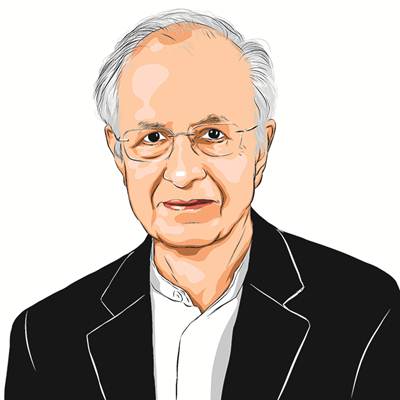Opinion A fuller freedom now
Indias young people have shown they have the zeal to break a corrupt system. Now they must learn to build a better one.
Engraved on the portal of the North Block in New Delhis Central Secretariat are the words: Liberty does not come down to a people. A people must rise to liberty. Liberty must be earned before it can be enjoyed. They were written by Indias British rulers from whom,led by Mahatma Gandhi,Indians earned their liberty.
The surprise of the Anna movement is the rising of young,middle-class,urban Indians,the most visible beneficiaries of Indias economic liberalisation (its so-called second freedom),demanding action from the very government that claims credit for it. Using Gandhis methods,they have risen to aspire for a third freedom: from corruption,from the governments apathy,from chalta hai. Their energy has stirred hope that something fundamental may change at last,as well as apprehension that what will happen cannot be predicted.
Such is the dynamic of revolutionary change that shakes a system out of its rut. Those who have the strength to push the vehicle out may not have the skills required to drive a complex machine. So it is not certain how the vehicle will proceed . These are the uncertainties for Arab countries shaken up by the Jasmine Revolution. India is expected to be more stable,it has been through two big shocks before and has landed solidly on its feet: when the British left (with Churchill predicting that Indians would not be able to manage on their own) and when Indira Gandhi declared an Emergency. Indias democratic institutions need reform,but their foundations are strong.
Indias youth must bring change. What do they aspire for? For the past year,the Planning Commission has been consulting the people of India,especially the youth,about the challenges before the country and their solutions. Over 950 civil society organisations across the country have already given inputs. Young people in rural areas and small town and urban India have been consulted. These suggestions have been consolidated,along with inputs from organisations representing Scheduled Castes,minorities,women and other groups insufficiently included so far in growth,as well as business associations and state governments. A summary of all inputs compiled by young volunteers,called Listening to India,is posted on the Planning Commissions website.
The Approach Paper to the Twelfth Plan adopted by the Planning Commission on August 20,emphasises the need to improve implementation,accountability and governance,and reduce corruption. It points to ways to do this based on inputs received from the consultations and the Planning Commissions own analysis. Consultations with citizens will continue to shape the Twelfth Plan. Just as the Anna movement could mobilise youth through Facebook,the Planning Commission has also created a platform on Facebook to engage youth (and others) in a systematic,ongoing dialogue . The feedback is being provided to the over 150 working groups,each consisting of representatives of concerned stakeholders,experts and officials engaged with developing the many facets of the Plan. This online consultation process is managed for the Planning Commission by India@75,an organisation of young people devoted to creating the India they want.
The first responses on Facebook half from small towns suggest the tasks ahead. Seventy-four per cent of the youth say that participation of people in local governance is essential for improvements in implementation and reduction in corruption. However,89 per cent say they are not aware of their local area development plans. Moreover,as many as 44 per cent say they do not even know who their MP or MLA is! Therefore,the gap between the desired state of youth participation in bringing about improvements,and the current reality the disconnect between the young and their elected representatives and with plans is large. As the words on North Block remind us,the fruits of desired change freedom from apathy,corruption,and unaccountable government must be earned by actions. Demanding change is not enough.
Be the change you want to see,said Mahatma Gandhi. Young people must take more responsibility for the world immediately around them. They can change the culture of chalta hai and helplessness. They can even put discipline into the chaotic traffic of Gurgaon. In cooperation with the local police,some young volunteers are wading into Gurgaons unruly,peak-hour traffic gridlock,armed with smiles and placards requesting,No third lane. By stepping out and reminding us to be the discipline that we complain is missing on our roads,they are bringing order.
A strong Lokpal will be a deterrent to corruption. However,it is insufficient for the systemic improvements the country needs. The Approach to the Twelfth Plan calls for efforts to be intensified to skill 500 million young people so that they can earn and contribute to Indias demographic dividend. The young respondents on Facebook admit they also need capabilities to effectively participate in local governance. Therefore,along with vocational skills to improve their earnings,Indias youth must learn constructive skills of citizenship too. It is inspiring that the vision of Indias youth is not merely for more consumption and more GDP. They aspire for a less corrupt and more just society. As they step out,they should remember that this will not be a sprint,but a marathon,for which they must have the stamina.
The writer is a member of the Planning Commission


